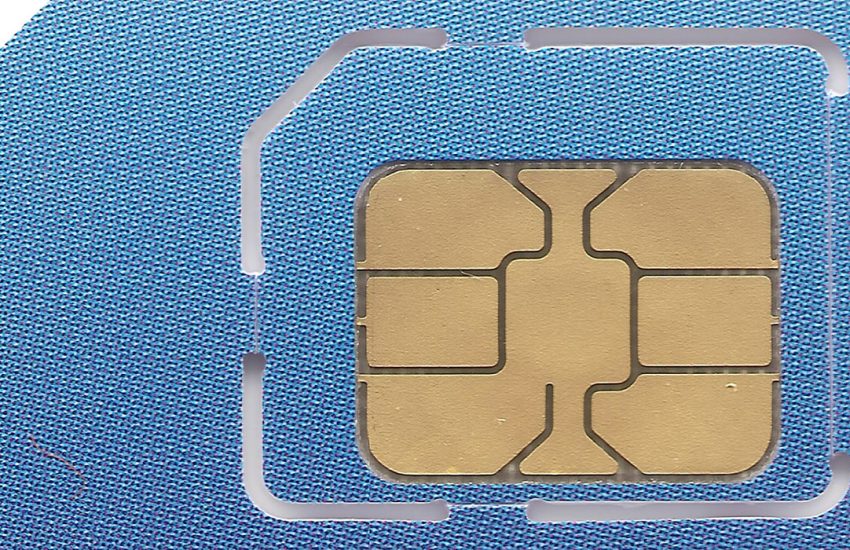Optimizing Telecom Costs: Tailoring Network Plans for Smartphones, Computers, and Tablets
In today’s interconnected digital landscape, smartphones, computers, and tablets have become integral to our daily lives, serving as portals to the online world. However, the convenience and utility of these devices come at a cost, and managing telecom expenses efficiently has become more critical than ever.
Gazelle.com – Buy Smart. Sell Easy.
Trade in your old phone, tablet, or laptop at Gazelle.com and get instant cash offers.
Or shop certified pre-owned devices that look and work like new — all fully tested and guaranteed.
Simple. Secure. Sustainable.
By fine-tuning your data plans and network subscriptions, you can not only ensure seamless connectivity but also curtail unnecessary expenses, making a considerable impact on your monthly budget.
From analyzing data usage patterns to exploring specialized plans and negotiating with service providers, this article presents a holistic approach to optimize telecom expenses. Let’s embark on a journey to unlock the secrets of cost-effective telecom management, ensuring that your smartphones, computers, and tablets are seamlessly connected without breaking the bank.
Join us as we navigate through a myriad of techniques, recommendations, and best practices aimed at empowering you to take charge of your telecom expenses effectively. Let’s explore how you can customize network plans for each device, making informed decisions that align with your usage patterns and lifestyle, thereby maximizing benefits while minimizing costs.
So, if you’re ready to embark on this journey to streamline your telecom expenses and unlock potential savings, let’s delve deeper into the realm of telecom expense management tailored specifically for smartphones, computers, and tablets.
Analyzing Data Usage Patterns
Understanding the data consumption of your devices is paramount to crafting a suitable telecom expense strategy. Start by utilizing tools embedded within your devices or opt for third-party applications to comprehensively track the data usage across smartphones, computers, and tablets. This meticulous analysis unveils valuable insights into each device’s data consumption patterns.
For smartphones, delve into the operating system’s settings or use specialized apps that provide detailed breakdowns of data usage. These applications categorize data usage by specific apps, giving you an accurate picture of which applications consume the most data. Moreover, many modern smartphones offer settings to set data limits and warnings, aiding in better management of data usage.
On computers and tablets, various operating systems also offer built-in tools to track data usage. For instance, Windows and macOS systems have settings to monitor data usage over both Wi-Fi and Ethernet connections. Additionally, some internet service providers (ISPs) provide online dashboards or apps to monitor data usage associated with their services.
By meticulously assessing these usage statistics, you gain insights into your data requirements. This allows you to choose data plans more aligned with your actual usage patterns, helping you avoid overage charges and ensuring you’re not paying for data that goes unused.
Family or Shared Plans
Network providers often offer family or shared data plans catering to multiple devices within a household or among a group. Consolidating several devices under a single plan can potentially yield cost savings compared to managing individual plans for each device.
Evaluate the terms and conditions of these shared plans meticulously to ensure they adequately meet the combined data requirements of all devices involved. Check for any limitations on the number of devices that can be added to the plan and ascertain if there are restrictions on data usage per device within the shared plan.
Additionally, consider the flexibility these shared plans offer in terms of distributing data allowances among devices. Some plans allow the allocation of specific data quotas to each device, allowing for better control and customization based on the usage patterns of individual devices within the shared plan.

Selecting the appropriate shared plan based on your collective data usage requirements can result in substantial cost savings, especially if the majority of your devices are underutilizing individual data plans or are used sparingly. Always compare the collective cost of individual plans against shared options to determine the most financially advantageous approach for your specific circumstances.
Wi-Fi Utilization
Maximizing the use of Wi-Fi networks can significantly alleviate the strain on cellular data plans across various devices. Devices like tablets and laptops, when used in environments with stable Wi-Fi connections, should primarily connect to these networks rather than relying on cellular data.
Home Networks:
At home, having a robust and reliable Wi-Fi network is crucial. Invest in a quality router and ensure it’s optimally placed to cover all areas of your residence. This ensures that all Wi-Fi-enabled devices, including computers, tablets, and smart home devices, can benefit from the Wi-Fi network, reducing their reliance on cellular data.
Workplaces:
Similarly, workplaces or offices should have a well-established Wi-Fi infrastructure. Robust Wi-Fi coverage ensures that smartphones and laptops used within the premises seamlessly connect to the network, minimizing cellular data usage during work hours.
Public Wi-Fi:
When outside, take advantage of trusted public Wi-Fi networks available in cafes, libraries, or other public spaces. However, exercise caution and connect only to secure and trusted networks to avoid potential security risks associated with unsecured Wi-Fi connections.
Regularly connecting devices to reliable Wi-Fi networks not only conserves cellular data but also enhances the overall user experience by providing faster and more stable internet connectivity.
Negotiating with Providers
It’s prudent to periodically review your existing telecom plan and compare it with the latest offers from different service providers. Stay vigilant about new promotions, plans, or discounts introduced by your current provider or competitors in the market.
Armed with information about competitive offers, approach your current service provider to renegotiate your plan’s terms. Many providers are open to negotiation, especially when presented with offers from competitors or when a customer has been loyal for an extended period. Express your interest in exploring more cost-efficient options and inquire about any loyalty discounts or plan upgrades available to you.
Should your current provider be unwilling to adjust your plan or match the offerings of competitors, consider switching to a different provider that offers better terms or a more favorable pricing structure. Loyalty to a particular provider should not hinder your ability to obtain cost-effective services that suit your needs better.
Regularly reassessing your telecom plan and being open to switching providers can often lead to substantial cost savings or better-suited plans that align with your evolving usage patterns and requirements.
Device-Specific Plans
Exploring tailored plans designed for specific devices used primarily in fixed locations like homes or workplaces can result in potential cost savings. Providers often offer specialized plans for tablets or computers that operate within Wi-Fi networks in static environments. These plans typically offer reduced rates compared to standard mobile data plans since the data usage primarily occurs within a limited area.
Home-Based Plans:
For tablets or laptops predominantly used at home, inquire with your service provider about plans specifically catering to these devices. Such plans may offer higher data allowances or reduced rates since these devices are often connected to your home Wi-Fi network, thereby consuming less cellular data.
Workplace Plans:
Similarly, for devices mainly used in an office or workplace environment, check if your provider offers plans tailored to these scenarios. These plans might be structured to take advantage of workplace Wi-Fi, minimizing the need for extensive cellular data usage during working hours.
By opting for device-specific plans optimized for fixed locations, you can potentially reduce your overall data costs while ensuring each device operates seamlessly within its usual environment.
Revisiting Plan Features
Regularly reviewing your existing telecom plan is crucial. Telecom companies frequently update their plans by adding new features, services, or even altering pricing structures. It’s essential to ensure that your current plan aligns with your actual usage patterns and needs.
Assessing Plan Features:
Periodically evaluate the features and add-ons included in your plan. Determine if these features are beneficial and aligned with your requirements. For instance, assess if features like international calling, streaming subscriptions, or additional data add-ons are being utilized effectively. Unused or unnecessary features might be inflating your monthly bill unnecessarily.
Updates and Changes:
Stay informed about any updates or changes made by your service provider to existing plans. Companies often introduce promotions or temporary offers that might better suit your usage at reduced rates or with additional benefits. Keep an eye on notifications or announcements from your provider regarding plan updates or new offerings.
By regularly reassessing your plan’s features and keeping abreast of any changes from your provider, you can ensure that you’re paying for services and features that align with your actual needs and usage patterns. This practice often leads to optimized telecom expenses and ensures you get the most value from your plan.
International Roaming and Travel Plans
For frequent international travelers, assessing and utilizing international roaming plans or temporary add-ons provided by network carriers is essential. These options often offer more cost-effective solutions compared to standard roaming charges, which can quickly accumulate substantial fees.
Understanding Roaming Plans:
Before embarking on international trips, explore the international roaming plans offered by your service provider. These plans might include specific data allotments, call minutes, or text allowances tailored for various destinations. Often, opting for such plans before traveling can save you from exorbitant roaming charges incurred while using standard services abroad.

Temporary Add-ons:
Some telecom companies provide temporary international add-ons that offer competitive rates for a fixed duration or usage limit during overseas travel. These add-ons might include data packages, international calling minutes, or text allowances at reduced rates compared to standard international roaming charges.
By leveraging these options, frequent travelers can avoid unexpected charges while staying connected abroad without overspending on roaming fees.
Regular Review and Adjustments
Consistent review and assessment of your telecom bills are fundamental to managing expenses effectively. Usage patterns can fluctuate over time, making it crucial to adjust plans accordingly to avoid overpaying for unused services or incurring unexpected fees.
Billing Analysis:
Regularly examine your telecom bills to understand your usage trends. Identify any discrepancies, unnecessary charges, or unusual spikes in usage that might need attention. This practice helps in comprehending your actual usage patterns and whether your current plan aligns with your needs.
Modifying Plans:
As your usage patterns evolve, consider adjusting your plans to better match your current requirements. For instance, if your data consumption increases, explore higher data allowances within your plan to avoid overage charges. Conversely, if you’re consistently underutilizing certain features or services, downgrading your plan could lead to potential cost savings.
By consistently reviewing and adjusting your telecom plans based on your usage patterns, you can ensure that you’re paying for services that align with your needs, thus optimizing your network plans for smartphones, computers, and tablets while maximizing cost efficiency and connectivity.


